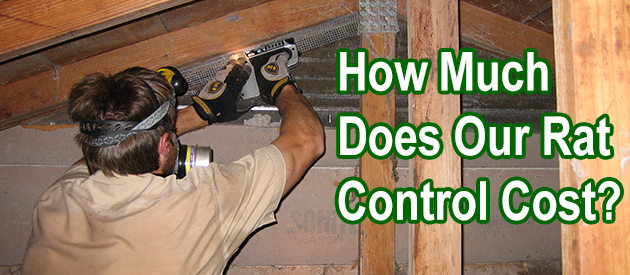Denver County, Denver Rat Control Situation:
Wanted to first thank you for the information on your site. A couple of days ago we started to house sit for someone for a couple of weeks. We noticed some evidence of mice the first night we were here and set some traps. Within 15 minutes we caught a mouse behind the stove. We hoped that was the end of it but had our doubts. Sure enough the next morning we heard some running around below the floor boards of the attic which we were sleeping in. We had eight traps set throughout the house but for a couple of days there was no signs or catchings other than a little pitter patter in the morning under the floor boards in the attic. Well just tonight we came back from a day long excursion and sure enough we had another mouse in the trap. We had our concerns though that we may have killed the parents to an unknown number of little mice. Sure enough a few hours later we are hearing little squeeks coming from beneath the floor of the attic. We are not sure how young these little kid mice are but we are curious about what your experiences is in the responses little mice would have when their parents no longer are available to them. We figure the younger they are the more dependent they are on their parents for survival, but what does that mean? We suppose if they are very young they won't survive very long and it may be difficult to get to them before or after their demise. If they are older though, hunger may overcome them and they will start to work their way out of the safe envirenment they have been accostomed to. How long could this process take and even if they do come out would they be up to feasting on the traps? Looking forward to your response Thanks
My response: Jeez, I have no clue. There are probably several adults. The young may starve then die. They'll be so small that they won't cause an odor. You need to seal your house shut to stop the mouse problem entirely.
Denver Rat Control Tip of The Week
Why Don't Repellents Work Well To Get A Rat Out Of The Attic?
The urgent need for people to get rid of rats in their attic has made many consider humane removal methods apart from trapping and killing, one of which is the use of repellents. But here is the question! Do repellents work in getting rats out of attics?
The main idea of a repellent is to make the environment unsuitable for rats. This is achieved by using several techniques such as, scents and sound emissions. Although there is a wide range of repellents to choose from, the fact is that the use of repellents might not give you the kind of result that you desire in the long run. It might help keep them away for a while, but when the effects of the repellents subside, they will come back.
Let's take a look at some supposed effective rat repellents and how they were designed to work. With this, you will have a clear picture of the result you might get when you choose to use repellents to get rid of the rats in your attic.
Scent repellents are one of the most common repellents that are readily available in stores. This repellent is designed to use intense scent to either irritate or nauseate the rats. When used the first time, this might help repel the rats as intended. But with time, these rats will get used to this scent and will tend to stay until they get accustomed to it.
Another commonly used rat repellent is mechanical repellents. Apart from being ineffective, they are also very expensive. These repellents are designed to use sound and light waves to repel rats in the attic. This will also not give the desired results simply because rats are intelligent animals and will figure out that the mechanism can't cause any harm to them.
Having realized this, the best thing you can do to repel rats in your attic is by making it less appealing to them. This can be done by cleaning out the trash and making sure there are no hiding places for the rats.


